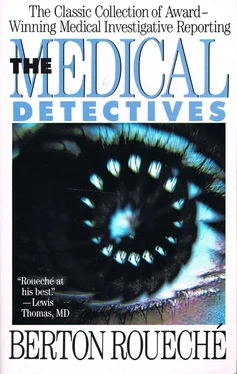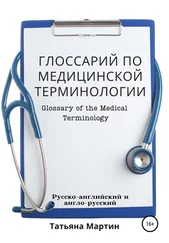Bacterium tularense —or Francisella tularensis , as the organism is now called for keener definition and to honor the illuminations of Edward Francis—stands well apart from most other pathogens in two rapacious respects. It has, for one thing, an extraordinary pathological vigor, a seething virulence, an almost matchless capacity to communicate disease. Most infectious diseases require an assault force of thousands, even millions, of organisms to successfully (depending upon a complex of physiological variables) invade the human body. Tularemia is one of a ferocious few (influenza, measles, Lassa fever) that can overwhelm their victims with a force of no more than a dozen. There are four general portals through which a disease organism may stage an invasion. Many infections (typhoid fever, cholera, trichinosis) are transmitted by the ingestion of contaminated food or water. Many (pneumonia, whooping cough, the common cold) are transmitted by way of the respiratory system, by inhalation. Others (malaria, yellow fever, Rocky Mountain spotted fever) are transmitted by injection—by the bite of an insect carrier or (as in serum hepatitis) the thrust of a contaminated hypodermic syringe. A few (boils and other staphyloccus infections, tetanus, conjunctivitis) are transmitted by contact—by entry into the body through a fortuitous cut or scratch. Numerous pathogens are capable of entering the body by more than one of these routes, some by as many as three.
F. tularensis can avail itself of any available route. The route by which F. tularensis enters the body largely determines the clinical nature of the disease, the organs most particularly affected, and, to a considerable extent, its severity. Tularemia is most commonly acquired (as in the classic case of E. E.) by contact—by handling the carcass of an infected animal, most commonly a wild rabbit. This can be, and often is, wholly inadvertent. In New Orleans, in 1949, a woman became infected (an investigation finally determined) by merely resting her wrist on a marble counter where a butcher had recently cut up a wild cottontail rabbit; entry was made through a little abrasion, the pinprick of a rose thorn. Contact with an infected carcass, the bite of a carrier tick or deer fly, and (though much less commonly) the ingestion of water contaminated by the carcass of an infected animal or of undercooked infected meat account for practically all of the some two hundred cases of tularemia that occur in this country each year. The tiny remainder—less than one per cent—are cases of pulmonary, or inhalation, tularemia. Practically all these are isolated cases, and practically all of them involve laboratory technicians working with cultures of F. tularensis .
Epidemics of pulmonary tularemia—a cluster of related cases—are very rare, almost unheard of. Indeed, as it happens, an epidemic involving as many as seven cases had never been heard of until the outbreak on Martha's Vineyard in the summer of 1978.
The second phase of the C.D.C. investigation of the ill-fated Lord family reunion was undertaken by a differently constituted, more sharply focused team. Its members all were epidemiologists with specific training and experience in the natural history of tularemia. The team was headed by Arnold F. Kaufmann, a veterinarian and the chief of the Bacterial Zoonoses Branch of the Bacterial Diseases Division (the zoonoses are diseases of animals that may be transmitted to man), and included Morris Potter, a veterinarian on Dr. Kaufmann's staff, and William J. Martone, an E.I.S. physician assigned to the Bacterial Zoonoses Branch. Dr. Kaufmann and Dr. Martone are co-authors of an authoritative monograph entitled "Tularemia."
"I guess you could say that we were picking up on Steve Teutsch and Ed Brink and the others," Dr. Kaufmann says. "They laid the groundwork for our study. But in a sense we were still at the beginning. In a lot of epidemiological investigations, maybe in most, the basic problem—the cause of the outbreak, the disease responsible—is known at the outset. The purpose of the investigation is to identify its source and control any possible wider spread. So, in a way, we were only just starting. We were investigating an outbreak of pneumonic tularemia. The seven clustered cases were, of course, the center of our study. But that wasn't our only interest. We wanted to know if the case cluster was an isolated event. Or did it represent a larger problem. Was tularemia—animal tularemia—endemic on Martha's Vineyard? We got under way on September 19. We couldn't have moved much faster. It didn't much matter, though. There was no great pressure. The clinical problem had been taken care of. As soon as we knew we were dealing with tularemia, we discussed the outbreak and appropriate treatment with Dan Stafford's doctor in Denver. Streptomycin is a specific for tularemia, and it makes a big difference in the pneumonic form of the disease. Pneumonic tularemia can be fatal. But a proper treatment is desirable in any variety. Untreated or improperly treated tularemia can drag on for weeks, even months. Tetracycline is effective, at least in treating the first rush of symptoms, but relapses often occur.
"Bill Martone led the way to the Vineyard. He left Atlanta on the nineteenth, and Morris Potter followed him up on the following day. Potter's particular job was to get source samples for testing for the tularemia organism—animal material, insects, soil, rotted wood, water, house dust from the cottage. That had been done before, of course, but now we knew what we were looking for. The sample material would be injected into laboratory mice, and a positive reaction would give us a pretty good idea of where the Lord exposure came from. And it might lead to other cases—sporadic, unrelated cases. That was Martone's job. He was working at the hospital, with the local doctors, rechecking the pneumonia-like admissions. But he was also interested in any suspicious skin diseases, anything that might resemble the classic lesion of what we call ulceroglandular tularemia—the mark of handling an infected carcass or suffering an infected bite. Anybody who seemed to qualify would be tested for antibody evidence of tularemia infection. Potter finished up on September 23, and he and I had a conference here in Atlanta. Then I went up to the Vineyard, on the twenty-sixth. Martone was still there. I can't say it was a very exciting visit. There are few things duller than checking hospital records. But Martone hadn't wasted his time. He had learned something, and when I joined him we learned a little more. We found a total of twenty cases of pneumonia-like illness and ten cases involving suspicious skin lesions. They were run down, one by one; some were locals on the Vineyard, some were summer visitors. We ended up with serologic evidence of tularemia in eight of the twenty, six of them local residents. Two of these were gardeners. One of the visitors, an itinerant sheep-shearer, was still sick, up in New Hampshire, with pleuropulmonary disease. We talked to his doctor and learned that he was being treated for tuberculosis. His doctor then put him on streptomycin, with the usual good results. The way he had been going, he might never have got out of bed. Well, all those findings told us a couple of things. One was that there is tularemia on the Vineyard, as there is in most places. And now the doctors there are well aware of it. They have it in mind as a possibility. I don't think many future cases of tularemia on Martha's Vineyard will be misdiagnosed. The other thing we learned was that the Lord outbreak was self-contained. The other cases had no relation to the cottage or to each other.
"I don't know what to say about the central problem—the outbreak at the cottage. It is officially still unsolved. We established certain things. There was, of course, no question about its nature. It was a case of airborne transmission. The intensity of the epidemic—an attack rate of one hundred per cent—suggested very strongly that the exposure occurred inside the cottage when the family was all together. We were able to eliminate certain possibilities—bare possibilities, I would say. An analysis of house dust was negative. So was an analysis of dust and what could have been mouse material found in the Heat-o-Lator system. In any event, the Heat-o-Lator didn't have much propulsion: it couldn't throw out much of an aerosol. On the positive side, we established the infection in several rabbit carcasses. We also learned that the Hooper dogs chased rabbits, and caught them more than once. Dogs seem to have some resistance to tularemia. At least, they don't usually seem to show any clinical evidence of disease. But we can detect exposure, and both of the Hooper dogs showed serologic evidence of tularemia infection.
Читать дальше












